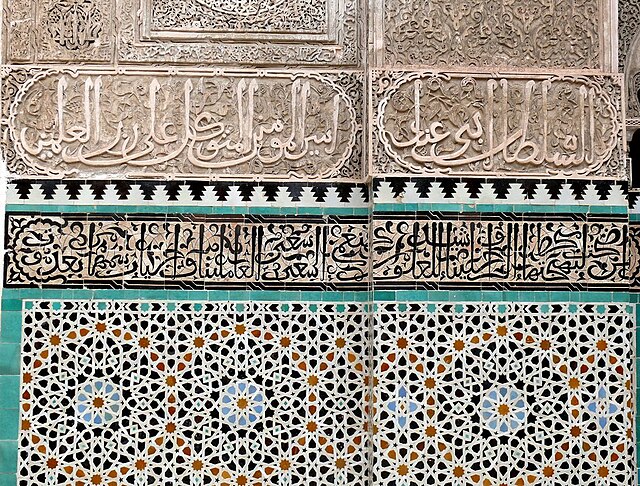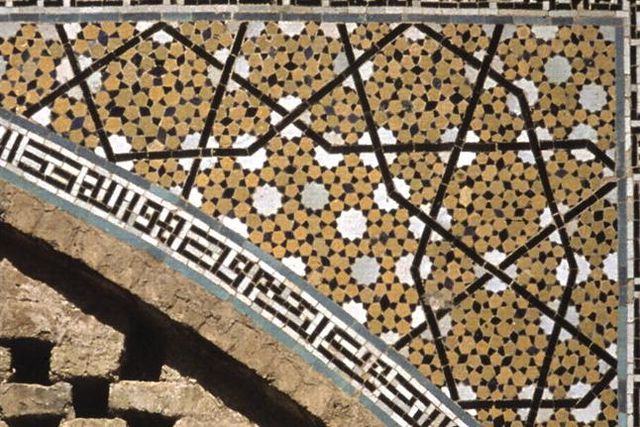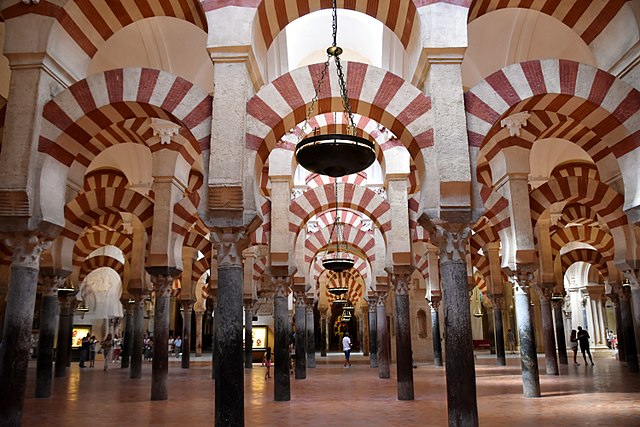Islamic ornament is the use of decorative forms and patterns in Islamic art and Islamic architecture. Its elements can be broadly divided into the arabesque, using curving plant-based elements, geometric patterns with straight lines or regular curves, and calligraphy, consisting of religious texts with stylized appearance, used both decoratively and to convey meaning. All three often involve elaborate interlacing in various mediums.
Geometric, arabesque, and calligraphic patterns ornamenting the Mihrab at the Jama Masjid, Fatehpur Sikri
Geometric Zellij tilework, stucco decoration with Arabic calligraphy and arabesques at Bou Inania Madrasa, Fes
Stone relief with arabesques of tendrils, palmettes and half-palmettes in the Umayyad Mosque at Damascus
Girih geometric pattern at the Darb-e Imam, Isfahan
Islamic architecture comprises the architectural styles of buildings associated with Islam. It encompasses both secular and religious styles from the early history of Islam to the present day. The Islamic world encompasses a wide geographic area historically ranging from western Africa and Europe to eastern Asia. Certain commonalities are shared by Islamic architectural styles across all these regions, but over time different regions developed their own styles according to local materials and techniques, local dynasties and patrons, different regional centers of artistic production, and sometimes different religious affiliations.
Image: Great Mosque of Cordoba, interior, 8th 10th centuries (38) (29721130342)
Image: 20180301124354 IMG 4179And 6more Interior 3
Image: Selimiye Mosque, Dome
The Mosque of the Prophet, standing on the site of Muhammad's first mosque in Medina. The present-day building is the result of many reconstructions and expansions up to modern times.








